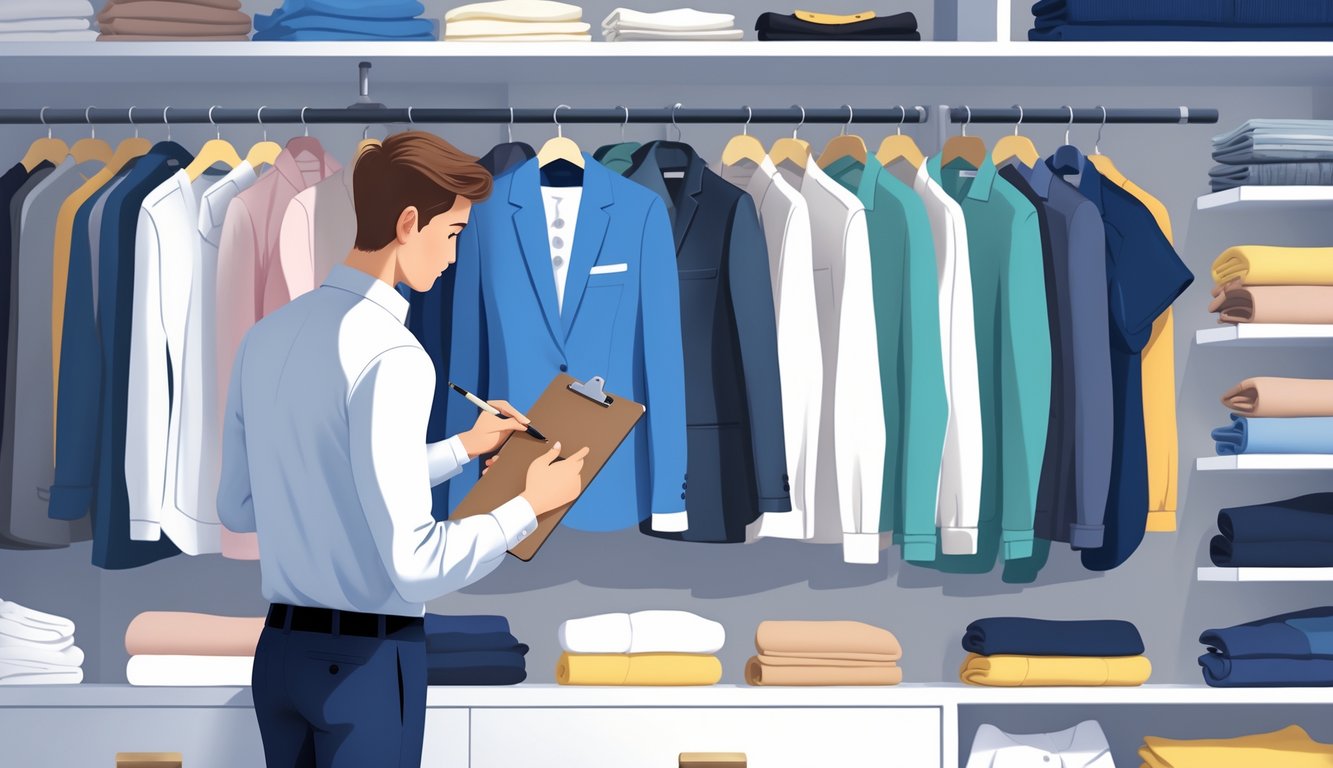
Long-Term Benefits of Regular Closet Audits
Stacking up unworn jackets and chasing every sale for “essentials” nobody remembers? Pure stress. Closet audits aren’t just a productivity fad; my wallet and my brain both thank me, even if my spreadsheet is a mess.
Financial Savings and Smart Shopping
Clothes multiply like rabbits (especially socks, I swear), so I switched to quarterly audits. I realized I was dropping $450+ a year on “timeless staples” I never wore. Tracking everything with a spreadsheet was eye-opening.
I never thought about “cost per wear” before. Now, if a $100 shirt only gets worn twice, that’s $50 each time—ouch. My $30 jeans? Probably $1.50 per wear. There’s even a calculator for this. Even stylists say data-driven audits save money and cut down on regret. I still don’t know why I bought four black tees last spring, but at least I’m not afraid to check my bank statement now.
Reducing Stress and Decision Fatigue
Mornings used to be chaos if my closet wasn’t organized. That one cardigan never fits but it’s still there, judging me. Every audit unclogs my routine—fewer choices, less stress. There’s a Kent State study (2019, if you care) that says people with less closet clutter spend 35% less time picking outfits. More time for coffee, or at least less existential dread.
Keeping everything visible—by color or type—actually works. Some coach told me most people wear 20% of their clothes 80% of the time. The rest? Just background noise. Regular audits aren’t about being a minimalist; they’re about not draining energy every morning digging for a sock. If only cleaning up my phone’s photo gallery felt this manageable.
Frequently Asked Questions
Nobody warned me that cleaning a closet would uncover receipts from two apartments ago. The money wasted on unworn tops? Real. Skipping basics for impulse designer shoes never adds up, and sustainable shopping feels impossible when half my shirts never leave the hanger.
How can evaluating closet contents save you money in the long run?
I started actually counting each sweater I hadn’t worn in a year. My Eco Closet says people toss clothes after 7–10 wears, but the replacement costs sneak up like streaming subscriptions.
Swapping out old pants for versatile options (black jeans, obviously) saved me from extra shopping. I still laugh at the day I quit buying duplicate cardigans—my bank account noticed. Fast fashion spending never impresses the credit card company, let me tell you.
What are the best strategies for decluttering a wardrobe effectively?
Dumping everything on the bed? My cat loved it, but I didn’t. Now I just ask, “Did I wear this in six months?” and move on. Sorting by season helps—shorts next to wool coats is chaos.
If it’s lost under five hangers, I ditch it (except my ripped band tee, that’s sacred). Some stylists recommend the Sustainable Closet Audit method, splitting everything by wearability and emotional value. Apparently, Marie Kondo was onto something with that “joy” thing.
Why is it important to regularly audit your closet for underutilized items?
Okay, so here’s the scene: I’m just standing there, staring at this closet that honestly looks like someone else’s. I don’t even remember buying half this stuff. And let’s be real, most of it’s probably headed straight for the landfill, which is just depressing. Did you know the lifespan of clothing dropped 36% in fifteen years? I read that on My Eco Closet’s analysis, and it’s honestly a little horrifying. I mean, I used to think buying “investment pieces” was smart—like, “Oh, I’ll wear this forever!” Sure, Jan. My rent isn’t getting paid by that blazer I wore once to a job interview in 2018.
And those jackets hiding in the back? I don’t even want to know the cost per wear. It’s probably, like, $100 per dust bunny at this point. Why am I like this?
How can identifying rarely worn clothes lead to more sustainable shopping habits?
So I’m looking at this sad pile of floral dresses, tags still on, and suddenly I’m questioning every sale I ever fell for. Fast fashion is such a scam. You get that little dopamine hit, but by the third wash, it’s basically garbage. Envynature’s data says cheap clothes get trashed twice as fast, which, yeah, checks out. If I’m really going to call myself “mindful,” maybe I should, I don’t know, actually look at the mess I’ve made in my own closet first?
And, honestly, who buys neon green pants? Oh right, me. I have no explanation.
What steps can someone take to repurpose or recycle clothing they no longer wear?
Throwing shirts in the trash feels kind of criminal, but I’ve totally done it. Didn’t even know textile recycling bins were a thing until, like, last year. Also, pro tip: thrift shops do not want your ripped leggings. Found that out the awkward way. Some brands—like Patagonia, I think?—have take-back programs, but only in certain cities, which is kind of annoying.
One of my friends actually cuts up her old tees for cleaning rags. Genius, honestly. I’d try it, but I can barely sew a button back on, so let’s not pretend I’m a DIY hero.
Are there tools or services available to help with organizing and assessing wardrobe usage?
Yeah, supposedly. I downloaded, what, four different closet apps? Maybe five? Lost count. Honestly, they’re weirdly addictive—like, I’d open Stylebook or Cladwell and suddenly it’s been 40 minutes and I’m just cataloguing socks. And did I learn anything new? Other than the fact that I wear my one black t-shirt basically every day? Not really. But hey, at least now there’s data.
Apparently, there are “professional organizers” who’ll do digital closet audits. I Googled them—turns out “Certified Professional Organizer” is a real title. Who knew? They send these intimidatingly detailed guides (here’s one: this sustainable closet audit PDF), and I swear, just looking at a color-coded spreadsheet makes me want to nap. Or maybe cry. Or both. Still, I guess it’s progress? Maybe.



